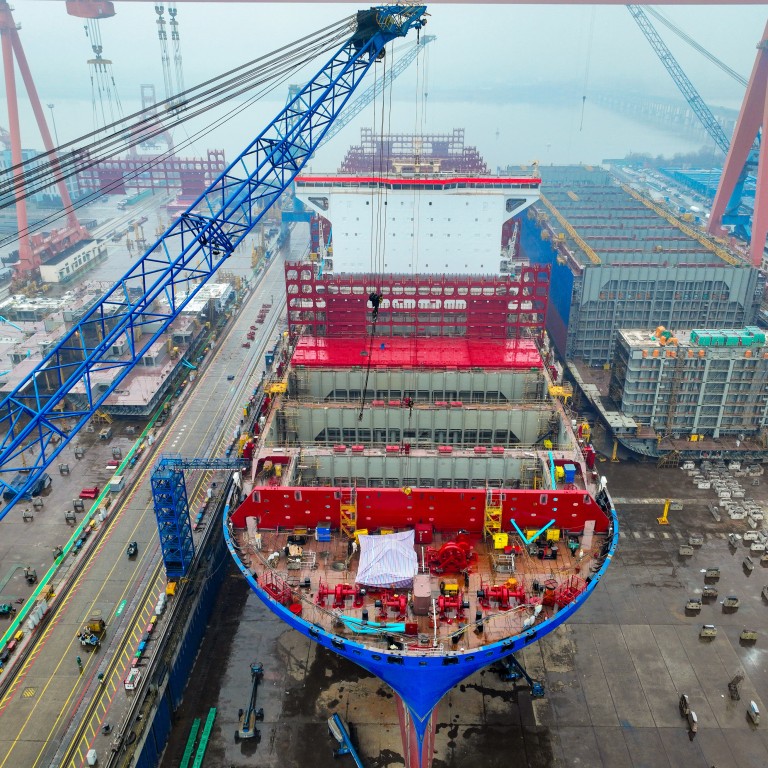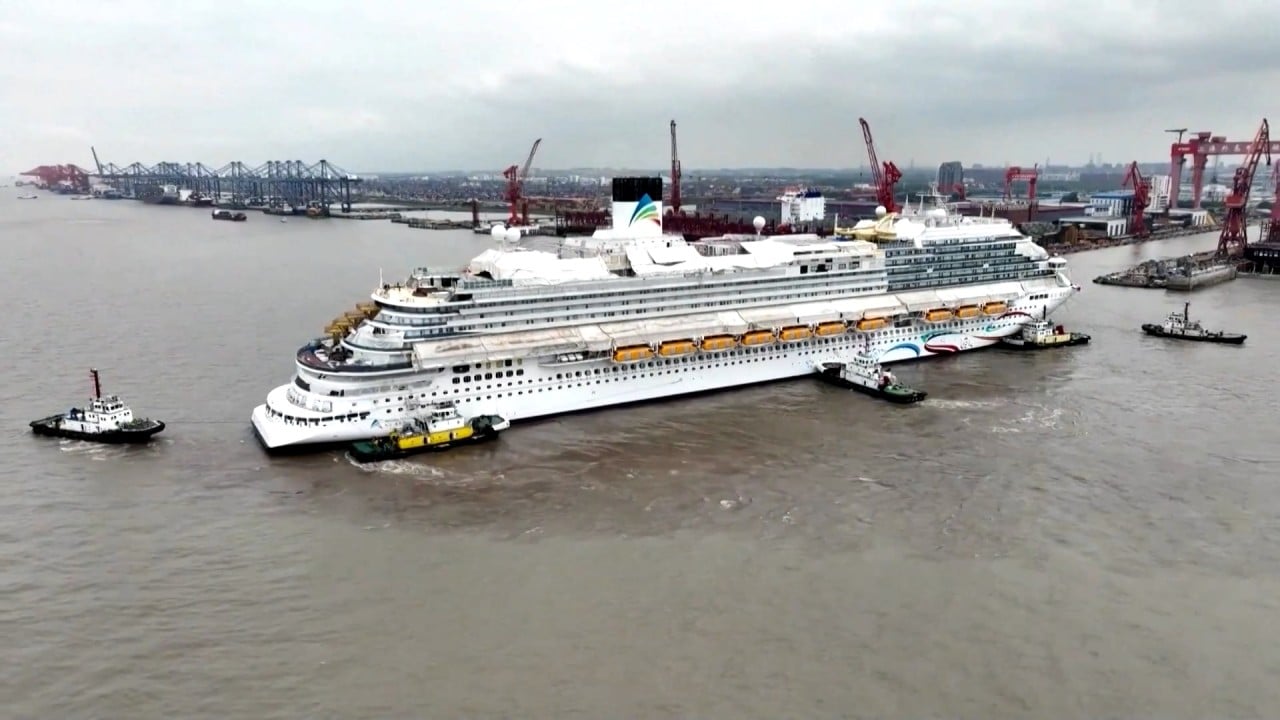
For China to leave S Korean shipbuilding rivals in its wake, leaders told to be stern in shipbuilding efforts and seas the day
- ‘Core research and development capabilities’ are still subpar in home-grown engines and high-value-added ships, warns NPC delegate and shipbuilding expert
- Call for enhanced cultivation of talent and the establishment of a special fund comes after South Korea retakes monthly lead in global shipbuilding orders
In the race to solidify its standing as a global leader in shipbuilding and leave South Korean rivals in its wake, China’s leadership is being apprised of the need to accelerate the nation’s indigenous development of engines and other critical components.
Although China continues to maintain an overall edge in the world’s shipbuilding market, a lack of self-sufficiency in terms of design and manufacturing is significantly curtailing its shipbuilding prowess, according to Fu Guotao, chief engineer of the China Shipbuilding Industry Corporation and a delegate of the National People’s Congress (NPC).
Quoted in industry media reports this week, Fu also pointed to international tensions creating more complications and challenges in the supply chain of ship engines.
“Domestically, there is a lack of core research and development capabilities for key engine components, positioning China at the lower end of the industrial chain in the international market, leading to low competitiveness, a small market share, a lack of pricing power, and limited product development,” Fu said.
As South Korea clings to shipbuilding secrets, China must ‘turn somewhere else’
China’s roughly 3,000 NPC delegates frequently make suggestions, proposals and convey public sentiment to policymakers, and Fu contended that it is imperative for the country to establish a comprehensive research and development system for critical parts that will cultivate stronger home-grown brands.
In 2023, China solidified its position as a dominant player in the shipbuilding industry by accounting for 50.2 per cent of the world’s completed volume, 66.6 per cent of new orders, and 55 per cent of backlogged orders, pushing the nation’s market share to a historic high.
According to Clarkson Research, a provider of shipping and trade data, China overtook South Korea as the top receiver of global shipbuilding orders in 2021 in terms of annual volumes.
However, China still lags behind Korean firms in terms of advanced technologies, designs and standard-setting, according to industry insiders. In particular, South Korea still has a commanding lead in high-value-added orders, such as for liquefied natural gas (LNG) carriers.
To address these types of shipbuilding shortcomings, Fu stressed the urgency of setting up a special fund to cultivate domestic talent, adding that China should “draw in university students, skilled practitioners and experts from outside the industry to participate in research within this domain, and to foster a culture of excellence and the sustained refinement of technical expertise”.
Such a concerted effort would facilitate innovation and advancements in the critical sector, Fu added.
Meanwhile, major shipbuilding provinces have not been merely treading water in their industrial undertakings, opting instead to roll out initiatives and strategic plans in their governmental reports to foster innovation in maritime technologies and propel economic development via the industry.
Authorities in the northeastern province of Liaoning have vowed to develop shipbuilding and marine-engineering equipment, new marine materials, and shipping services. Shanghai also intends to develop a marine-equipment industrial cluster, while the southern manufacturing hub of Guangdong looks to cultivate billion-yuan industrial clusters for marine ships and marine-engineering equipment.
Despite US sanctions, Chinese shipyards experience record growth: report
Despite three consecutive years of dominating total orders by volume, China’s monthly figures still fluctuate to the degree that it still finds itself in a neck-and-neck race with South Korea, which received more shipbuilding orders last month.
In February, South Korean firms received new orders for 28 ships, with a total value of 1.71 million compensated gross tonnage (CGT) – an indicator of how much work is needed to build a specific type of ship – accounting for 50 per cent of all global orders, according to Clarkson Research.
In comparison, China secured orders totalling 1.41 million CGT, accounting for 41 per cent of global orders.
Not to be outdone, South Korea has also set out plans to expand its advantage in its pillar shipbuilding industry as it similarly seeks to contend with mounting challenges from China.
Seoul this week announced a five-year investment plan, valued at 9 trillion Korean won (US$6.75 billion), with three major Korean shipmakers – HD Korea Shipbuilding & Offshore Engineering, Samsung Heavy Industries, and Hanwha Ocean – to secure a “superior gap” in the nation’s shipbuilding technologies.


